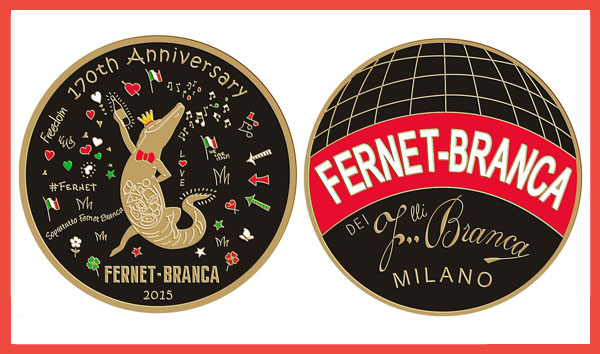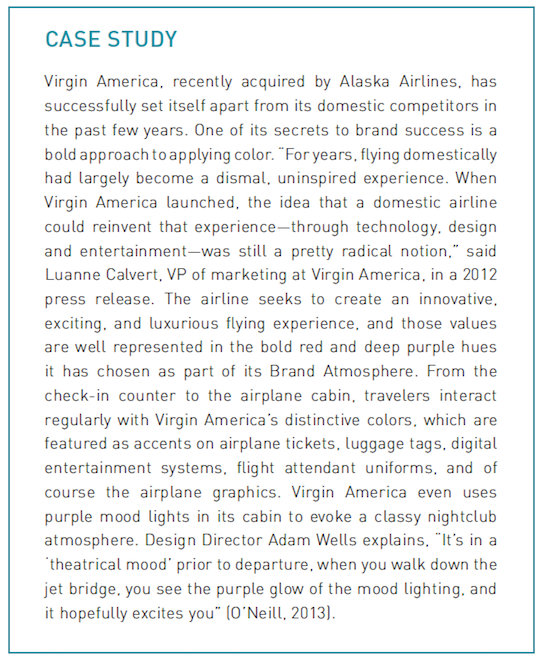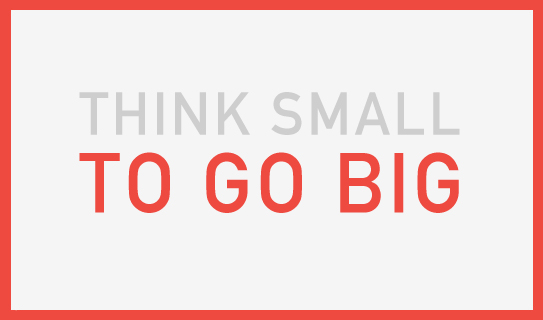Blog Archives
How The Narcissism of Prince Can Lead to Your (Next) Successful Brand Launch
I spend a fairly good amount of my professional life traveling the world for meetings, workshops, and lectures. My wife pities me for the early mornings, late nights, the anxiety, the unknown, the airports and the countless Uber rides. Me, on the flip side, I enjoy it thoroughly. I get to explore new cities and cultures and use the little bit of downtime I get to gain new experiences. I will always be a seeker. Just like a little boy, I am curious and still believe that the world is my oyster. It’s strange, but I firmly believe it works to my advantage as it fuels me with inspiration and, as a result, creates lasting memories.
This week brought me to Minneapolis to work with a Fortune 100 company on two brand launches, and this morning I used the time before my flight to take a ride out to the suburbs for a tour of Paisley Park. Not one of the city’s many beautiful parks, Paisley Park is the place Prince (‘The artist formerly known as,’ who passed away abruptly last April) created in order to write, record, party, host, meet and at times stay at, that is crafted precisely to only his needs and according to only his vision. I am not a ‘super fan’ by any means, but an admirer of his talent and felt like a visit to this ‘sacred’ place would make for a unique experience. And it sure did.
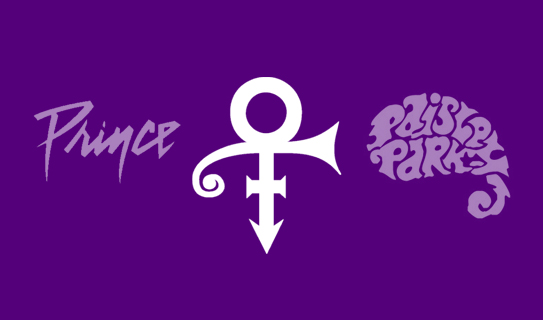
The ‘Prince,’ ‘Love Symbol #2,’ and ‘Paisley Park’ logos are all part of the Prince brand (owned by their respective trademark owners, shown for illustrative purposes only).
Besides being an amazing musician, dancer, singer and overall creative artist, Prince was also an overachiever, a perfectionist, and a narcissist. He was an entrepreneur extraordinaire and a meticulous brand creator.
At the end of an amazing tour through his digs – he dubbed it Paisley for the ever changing nature of paisley design patterns, a metaphor for his creativity, and Park for it being his playground – I left feeling equally moved and inspired. When on premise, Prince was found recording new material more often than doing anything else. Many nights of the week he had gatherings, many were free to attend for the ones ‘in the know.’ Some he unexpectedly popped in to perform a quick impromptu jam session for the few lucky people in attendance. Some were 3-plus hour long sets for 2,000 attendees in a full stadium-gig setting (Yes, this ‘park,’ his house, is ginormous). Most started between 1:00 and 2:00 AM. One night when he serenaded Madonna, who was in town for a tour stop, there were only 8 people in attendance. As our tour guide, Shawn, said, “I guess people have day jobs and 2:00 AM shows don’t fit too well into that routine.”
Prince’s recording studio was centered around a mike and a chair. He sat while singing because most of the times he was operating everything else all by himself, simultaneously. Guitar, piano, synths, you name it. When he walked into the entrance hall of Paisley Park, his eyes were looking down upon him from the ceiling in the form of a big painting.
He also created a room for each of his finished albums. There are, obviously, quite a lot of these rooms. Like shrines, these rooms are filled with video footage of concerts and interviews of that era, costumes he wore during that tour, specific instruments played, artwork for the album and tour, and walls covered floor to ceiling with images of him during that era. These rooms were not created for the museum, they were part of his living life. He walked by them every day he spent at Paisley Park.
You can only imagine the significance he saw in each project and the pressure he (not even thinking about the fans, critics, and record labels) put upon himself with any new project, knowing that ‘at its conclusion I will designate a room to it, which shall outlive me once this turns into a museum.’ The kind of attention to every project detail had to be meticulous: From concept, compositions, lyrics, artwork, theme, costumes, performance, production, band, dance moves to PR, the list goes on and on.
At the onset of your next new project, and may it be the first – your startup perhaps, envision that room Prince dedicated to each of his projects and ask yourself how the room for your project should look two years after successful launch:
-
Is it deserving of ‘a room’?
If not, how can you make it more deserving?
-
Will it be loved and admired by the ones you cater to?
If not, how can you create more empathy?
-
What is the unique experience?
If it lacks, go back to map the customer journey and create enough delight and ‘moments of memories’ along the way.
-
How does it fit into the house (of your brand, or brands, if applicable)?
If it doesn’t, maybe that is a pivot or a step into a new era, but ensure you can see past this step to plan for consistent growth and a unified future brand experience.
-
What lasting impact will it have?
Is that the impact you seek – is it impactful enough?
-
Does it push the company forward enough? Or in the case of a startup, does it push you towards your ‘true north’ vision for the brand?
If not, experiment more to push your industry’s boundaries.
You don’t have to be an obsessive, genius rock star in order to do that. Nor a narcissist. You just have to have enough foresight to envision, in order to connect, the dots. But you have to list out all those potential dots, and envisioning that room is one great way of doing so.
How will it look? Are you impressed?
Once you are, perhaps you should throw a brand release party – sounds so much better than a launch party now doesn’t it?
Applause will be a given, encores optional.
Suggested Tweet
How To Ensure Continuous Brand Affection As Your Tech Startup Approaches Financial Glory
[This article was originally published on Forbes on 04/07/17]
We’ve heard a lot about tech IPOs in recent weeks thanks to an instant picture-taking app from Venice Beach going public. Tech companies, some worth as much as small countries, leave many open questions for investors, users and brand managers alike.
As a brand strategist known for my work with tech startups, I was recently interviewed on CGTN on the topic of how these big evaluations and IPOs may negatively affect a brand and its loyal brand advocates:
In preparation for the show, I wrote down tips on how to deal with the associated brand risks for when your tech startup finally hits the jackpot. You never know: A merger, massive round of funding or even the mighty IPO might just happen to you next.
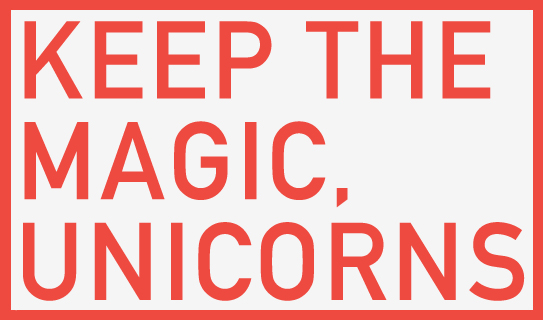
1. Show Your Users It’s Still About Them
Many consumers (or “users”) question high valuations, especially those of tech companies whose products they use on a daily basis. It is difficult to grasp the financial value in broader economic and strategic terms with tech companies that don’t show big profits, yet are worth billions of dollars. This often makes younger consumers belittle and ridicule apps they used to love. It changes perception.
On top of that, it happens that millennials, especially teenagers, are not known for being brand loyal. If they are your power users, communicate your shared values with them, because a billion-dollar valuation is likely not a value they will automatically cling on to. Now, they won’t delete your app unless the brand itself shows obvious signs of change, but once it does, then they’ll jump ship with the simple swipe of a fingertip.
Be ready to over communicate to your users during the time of IPO. Don’t solely focus on talking to the press. Instead, ensure your users hear from you in your proven and authentic tone. During these times of press storms, “surprise and delight” the ones who made you successful in the first place. They need to – and deserve to – hear from you.
When Google filed its IPO back in 2004, it integrated mathematical (aka “geek”) humor all the way into their filing papers. The value of the offering was equivalent to the mathematical constant e (2,718,281,828). It was a great way to be true to its brand aura even during this risky and otherwise very dry period, giving brand advocates buzz to share.
2. Reinstate And Reignite Your Company Culture
IPOs of young companies easily result in company culture breakdowns. With significant growth and financial backing often comes a hiring spree with leadership changes, added levels of management, and plenty of processes, not to mention the formation of a board of directors. This is the time of internal employee joy – and fear.
Now that the financial success is taken care of, go back in time and think about what type of company you wanted to create in the first place. Have you reached the goal of birthing your dream company, beyond in financial terms? What culture did you want to create? How did you want to inspire your staff? Write down those values at this very important moment in your brand’s history and have your marketing and communications team draft a plan to reinstate them into the company at this time of change. Understandably, during times of an IPO, they are all slammed and are already working overtime. That indeed makes this additional project even more important; they will thank you later.
Being a true brand that is met with admiration is all about trust and authenticity, both of which have to come from the top in order to trickle down from the brand to its users.
3. Don’t Instantaneously Disrupt The Experience You Meticulously Crafted Over Years
An app is both an extremely personal as well as an extremely emotional experience. Users focus on their own tasks and the app is mainly a facilitator in their lives, from booking a room, to taking a picture, to sharing their world with others in their circle. This personal experience is never about the company that created the app; it’s about the user and other users. An app is not a fashion brand that users wear like a badge of belonging; instead, most tech brands are functional extensions of daily lives and the user content a reflection of their own personalities.
The sudden press surrounding an IPO, a high evaluation, a huge financial investment boost or a merger will create a fear of change in their experience with the app and a fear of a change in the integrity of the brand. With money often comes corruption, or so your users have heard. Make sure they know where you are heading with the company and why all of this talk about a big financial boost will result in an even better personal experience for them.
Brand Colors – Not A Science Nor An Art, But A Strategy
Life is full of give and take, and so at times one finds himself partaking in experiences that one would usually not seek out on their own. My lovely wife convinced me to partake in one such experience last week. We visited the ‘guru of aura photography’ as she made a rare L.A. stop – in form of a popup inside a hip retail shop – and had our pictures taken. Yes, there is such a thing, and it’s apparently currently not just a thing, but the thing. Gwyneth Paltrow does it, need I say more? And now, so have I.
Please, go ahead, meet my aura:
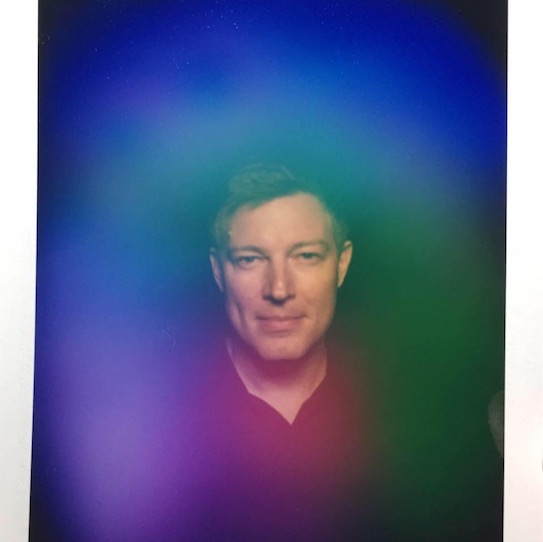
As it goes more often than not when opening yourself up to new experiences, this actually was quite enriching. It was fun to partake in a mythical-visual experiment of sorts, and my aura seems to be in good shape too; can’t you tell? Well, perhaps you can, at least a little bit. As for me, without the detailed info (or shall I say ‘reading’) I received after the picture was taken, I only knew that blue/purple was about trust and loyalty, and comparing it to the many other aura portraits I looked at online, prior to receiving the professional insights, I realized that it had quite a personality of its own. Everything else that I learned about the meaning of these particular colors and their locations surrounding my image directly from the photographer, I would have never guessed by just looking at the colors without a full de-briefing.
That experience also quite nicely summed up my rule of thumb when it comes to the art and science of using colors in branding:
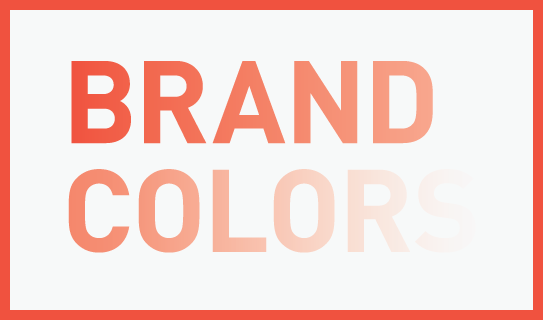
Many books have been written about how to use colors in logos, the meaning of colors and how colors make consumers feel. I even dedicated 3 pages of my book on branding to the significance of color. Color makes an impression and it matters, absolutely, but just how much should the deeper meaning of color, that us ‘branders’ know about, really influence you and your creative team when crafting your brand’s identity?
My advice to you: Don’t read too much into the meaning of colors. It’s less a science and an art than it is a strategy.
Just because blue stands for trust, your FinTech startup should not choose blue for its logo. Your restaurant franchise should not immediately pick yellow or orange as the key color ingredient because it evokes appetite. If you go by the book of colors, you will never stand out from your direct competitors as they read that very same book. As far as my book of branding is concerned, it’s all about you not blending in, and that includes the color choices you make.
To celebrate Virgin America in light of the recent sad news, here is how they used color to stand out, via a case study from “How to Launch a Brand:”
Yes, colors matter, especially when you use them to stand out.
As you start researching the meaning of colors, stop. Instead spend ample time researching your competitor’s colors, then go the complete opposite route and pick colors that truly stand out within your vertical.
But, as most things in life go, this too is a give and take, so ensure the colors you and your creative team pick, as different as they may be from your competitors, will still support your brand’s personality and positioning. That may have been obvious, then again, so was my aura.
How To Avoid Your Uber Brand Mishap
Ride-hailing app Uber had a rough couple of months, to say the least.
I for one have been an über Uber brand advocate from day one and have had a lot of defensive conversations (with cab drivers, my parents, and other naysayers alike) on behalf of the brand I so loved.
Loved, because there is love no more.
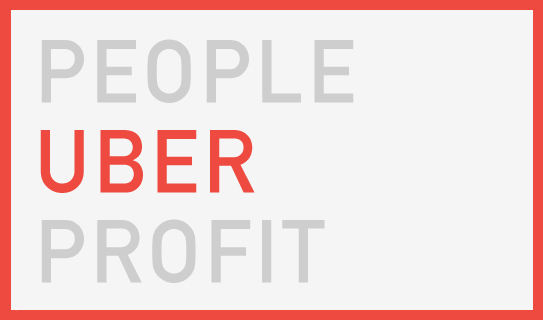
The other week, as I was on a flight to Austin to hold one of my many Resonaid brand foundation workshops with a startup, I was contacted by the Los Angeles Times on my thoughts about Uber’s brand troubles. I conducted the interview from the plane, which made me feel uber-productive (and quite special, I must admit), and was greeted by the following ginormous quote in the LA Times later that very same day:
One thing leads to the next and I was interviewed by Canadian TV station CBC the day upon my arrival back in L.A. on the same topic (you can read that story here). Now that I am rather well-versed on the subject of Uber brand bashing (*sigh*), I want us all to understand the one fundamental key branding lesson from their mishap so your startup can avoid following Uber’s path:
Uber came in to disrupt a commodity and monopoly service, the cab industry. Today it may be taking their place and share the same fate with the very companies that used to be the enemy. By focusing solely on the next round of funding and speedy economic growth, the company seems to have left behind what matters the most, what literally drives their business: People.
First, the people who actually make Uber a functional business model, its drivers. Continuously lowering of wages and surpassing employee laws turned into a burden for the early Uber drivers, the ones that actually loved the brand the most, as they are now being forced to leave Uber or work hours that may seem unsafe for drivers and passengers alike.
The effect this has on passengers has been noticeable over the past 6 months: The brand experience of a cool, novel, inexpensive service in nice cars with fun and educated young drivers that cared about making your ride enjoyable changed completely. Today, the only brand attribute left is ‘cheap’ and the Uber brand took a massive hit because of greed and a one-track mind that left the life force of a functioning company behind.
New ride-hailing services that care about more than simply profit (ranging from a company offering female drivers for female riders – to a nonprofit that pays its drivers well) will gain momentum quickly as the Uber brand perception is changing with scandals continuing to hit the mainstream press.
Uber may be getting disrupted by empathy.
The key takeaway for your startup is to never sway away too far from the one key brand rule Uber broke by their single-minded product rather than brand focus:
People first and profit will follow.
How To Go From Brand Affection To Product Sales In 2.2 Seconds
Everyone is preaching not to be ‘salesy.‘ It became a holy rule of marketing: Brands, earn your trust, then quietly suggest your latest products. Funny how that works, or rather how it does not work, as brands have been so hit over their heads by that ‘don’t be salesy’ mantra that they forgot to actually sell products once brand trust has been earned.
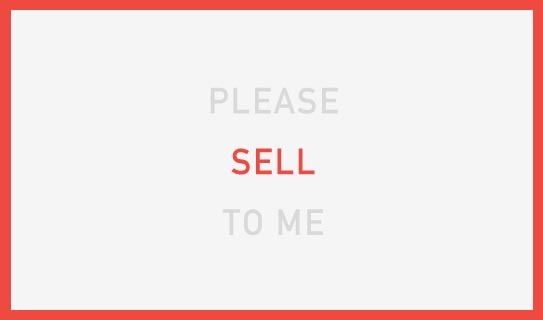
We write February 2nd, the day I paid a good amount of money to partake in the Porsche Experience Center. It was there I learned that it takes 2.2 seconds for the 2014 Porsche Spyder to go from 0-60 mph (in case you were wondering where my ‘clickbaitish’ blog post title was derived from). Not that I am into race cars nor that the Porsche brand gets my heart pounding. No, Porsche opened this race track close to where I live and being fascinated by brand experiences (and being known for enjoying higher speeds) I figured I should get my adrenaline going by racing a Porsche 911 Targa 4S (to be brand-correct) around a track, spinning it in a circle on a wet surface at full throttle and sliding uncontrollably through black ice; all while a professional (a ‘Porsche Drive Coach’) was sitting next to me praying for his dear life, as he should. That, after all, is what I paid him for.
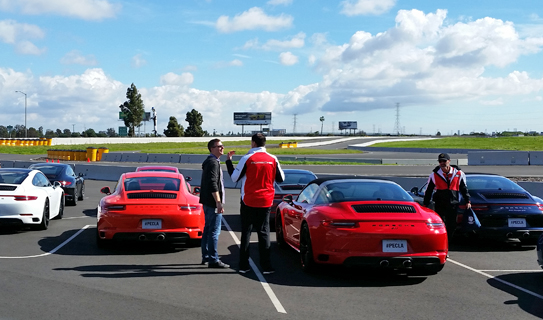
Pictured: Me and my ‘Porsche Drive Coach’ before the fun began
As was to be expected, I got fully engulfed in the Porsche brand from the moment I stepped into the facilities: While usually exiting through the gift shop, here you spend most of your time in it as it serves as the bridge to the ‘Speedster Café’ with its popular outside terrace where one can watch the cars zip on by and start one’s own experience. From Porsche exhaust speaker systems, Porsche office chairs, Porsche cookie stamps ($39, in case you fancy some) to GT3 rear spoiler book shelves, the imagination for branded products seemed endless. In the main entrance hall one can check out vintage Porsches and the actual race cars driven to victories during important historic contests. All Porsche, all the way.
After hitting the pedal for 90 minutes, exhilarated by the driving and brand experience, we took a seat at the fine dining restaurant, named ‘917,’ where we quickly got served some bread and 911 butter. Wait, what? Yes indeed, here is the 911 butter, and it was rather tasty:
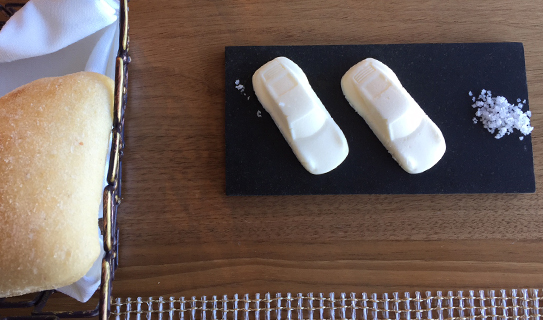
Pictured: Porsche 911 Butter
As I sat there breaking bread with the Porsche brand I told my wife something that would have made the Brand Manager cringe: “You know, despite how awesome this was, and how I am getting brainwashed by the brand and loving every second of it, I still do not feel an urge to ever own a Porsche. Why is that?”
Here is why, and it is a global marketing and branding disease I see all across the brand landscape: We show off our overall brand aura while potential customers are leaving trade shows and flagship stores empty-handed because we miss out on making it personal and relatable. If you are a high-end brand like Porsche that charges for a brand experience, one comes to understand that you do not want to come across as being ‘salesy,’ yet from the minute I stepped into the experience I was offered brand tchotchkes and branded butter. Why not go all the way and capture my emotions by transforming a well-crafted dream of a powerful brand into something that can become my reality: Show me the car options, show me the e-hybrid, the technology and the things that I care about now that I got re-assured by your great brand image and legacy, and I felt how much fun it was to drive your cars.
Brands, if we have an actively engaged and fully ‘brandwashed’ potential customer, please, for crying out loud, let’s craft a dream of ownership, not a bubble of a brand ethos that will burst the minute (s)he is not fully engaged anymore. Let’s see how our product could fit into their world – outside of our world.
Any brand, may it be a Porsche or a startup, needs to be sensitive to crafting experiences that tell a story; a story that fits into a unique individual’s life. Like therapy, let the consumer do the talking, but ensure you deliver the platform and take the steps to listen. Follow the ‘here is our most amazing product’ with ‘…and here are products that would work for your individual needs.’ Don’t sell a brand mythos alone, make them experience their own personal benefits first hand.
When I came home after my day at the race tracks, I immediately went to the Audi website to ensure they still sell the model I am currently driving, just to feel a bit of reassurance as my lease will be coming to a close soon. And I will drive that Audi as if it was a Porsche, now that I learned how to hit the pedal the right way. Thanks for that, Porsche.
As to you startups, find your engaged target and be salesy; it won’t hurt your brand, but it might just make a new customer happy.
Branding Your Venture: Seen It All? Listen Up!
It may seem as though I have been suffering writer’s block so far this year, but fear not as I am knee-deep into writing my second book, which I am excited to share more about in the months to come. This is my excuse: writing has kept me from writing, but – better late than never – here I am wishing you a Happy New Year!
Besides writing during the holidays I did what most do as they start winding down: I was glued one too many hours to my Facebook timeline. Filtering through the current war in politics to find the few posts of friends that were non-political in nature turned productive once I saw my friend Chris’ hilarious post: Chris was on a plane with his wife, noting he got a free upgrade to first class, and, without hesitation, left her behind in Economy to live the good life. I was intrigued and awaited the backlash in the comments box, which sure enough came trickling in one after another at mesmerizing speeds. His reply? “I can’t hear you over the bubbles of the champagne.”
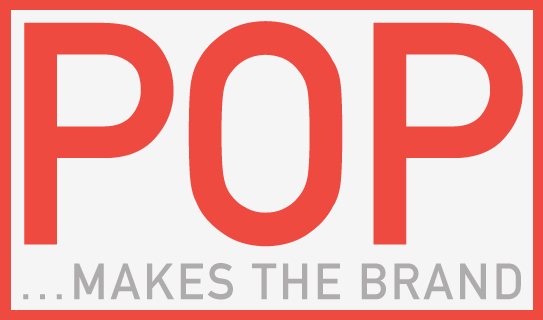
I thought it was witty, hilarious and it evoked an immediate sense of space and time. It made me recall the sound of champagne (as well as the witty POP champagne brand named after the sound of the cork popping – and for being a ‘Product Of Pommery’) and it made me recall memories of many great celebratory situations and, yes, the times I too got my flight upgrades.
I spend a lot of time writing about how new brands can stand out and connect with a target audience; strategically, visually and verbally. How your brand looks and feels is crucial, how it behaves existential, but how does your brand sound? Does your brand sound like anything, and if not, should it?
A known advertising routine for Fortune 5000 companies, sound is often times used in audio logos (‘sonic branding’ –Intel comes to mind, well, ears) which sonically enhance the moment in which a brand’s logo is being revealed, as well as memorable jingles, which are oftentimes so memorable that they turn into full-on annoying. Sounds are extremely powerful emotion-triggers. And just like it is the case with the return of print (book sales are up 3.3% in 2016, third growth year in a row), the use of branded audio is a neglected yet powerful way of brand communication and immersion. Because it is not a standard staple for new ventures to be using (yet it became quite affordable to create), it presents a great way for your startup to stand out and to further strengthen the connection points with your audience.
Start by being aware of how your product sounds when you plug it in, when the task is finished in your app, when the brand icon appears, when the videos start and end? Have you given your product, or brand, sounds, or do certain interactions with your physical product already make unique sounds of their own? If so, how can these be leveraged – packaged to be re-used – so that you can lift that moment in time when your customer is fully immersed in your brand and bring it back to other times in your brand journey?
This year, let’s look at empathy in an additional way: let’s not only listen to our audience, let’s listen to our products and make them connect with our audience sonically, creating emotional connections and stories that turn into memories.
So unless you don’t get any flashbacks when WHAM’s Last Christmas starts playing every December, and especially after this last christmas, you will agree that sound indeed is a powerful trigger of memories. Let’s make more use of it and create some sound memories with our brands.
Empowering entrepreneurs on Deirdre Breakenridge’s Women Worldwide show
I am providing an honest look inside mishaps and successes of my past 15 years as a branding professional.
CATEGORIES:
Chatting with Chad Bostick on the Hello Tech Pros Podcast
On this interview with Chad I talk about unplugging: How to work harder with less stress.
CATEGORIES:
